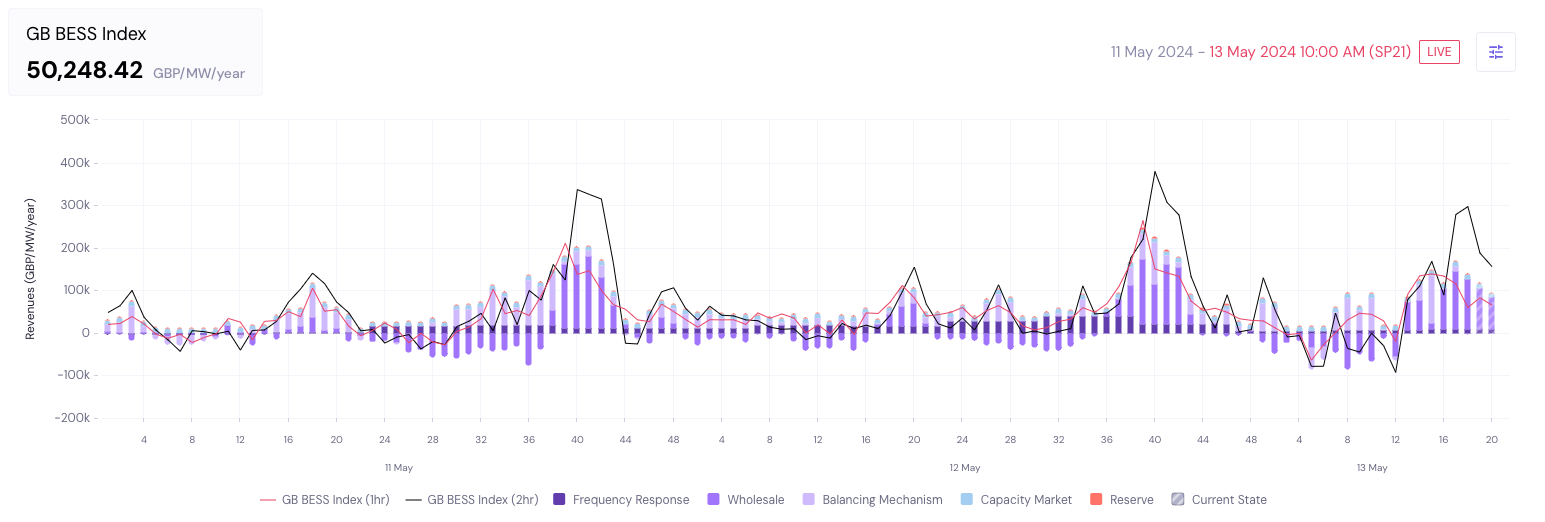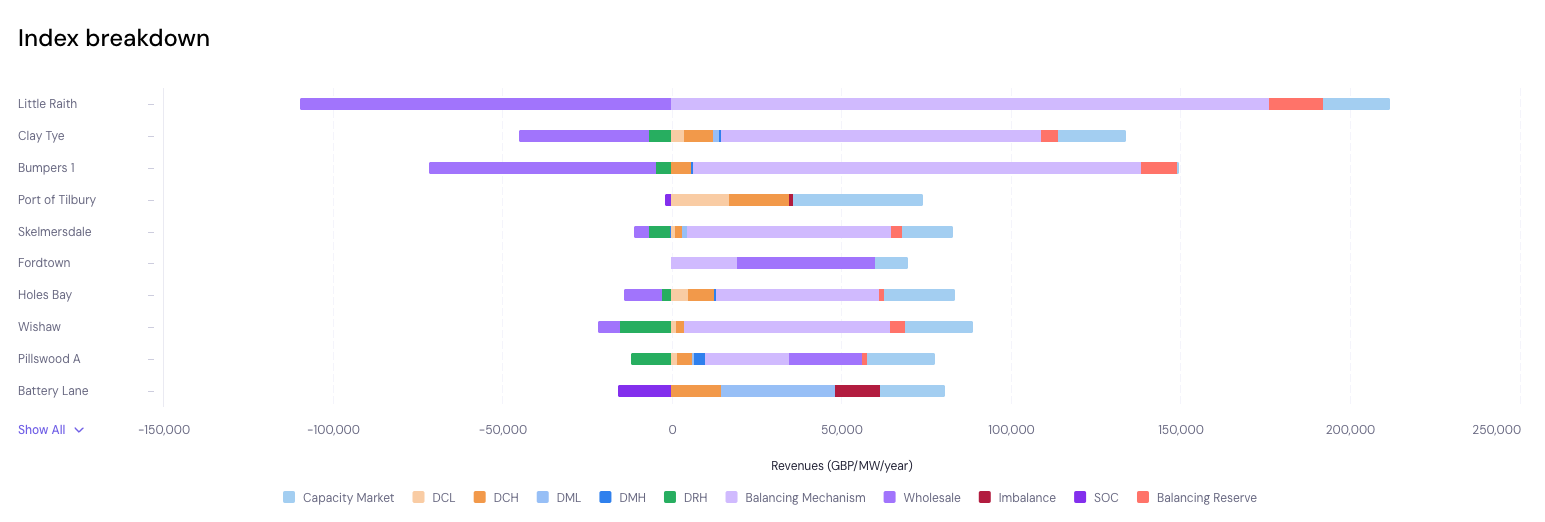Overview (GB)
A summary of the revenue components included in the GB Benchmark, and the assets included to calculate them
The BESS Indices show the GB fleet revenues for battery energy storage, calculated live each half-hour.
There are three distinct GB BESS Indices

The GB Benchmark showing the whole fleet, 1 hour, and 2 hour BESS Indices
Modo Energy currently produces three GB Indices:
- GB BESS Index
- GB BESS Index (1hr)
- GB BESS Index (2hr)
The GB BESS Index includes all assets in Great Britain (with some exceptions; see details below), whereas the 1hr and 2hr indices only include assets with a duration under 1.5 hours and above 1.5 hours, respectively.
Batteries with poor data visibility are excluded from the BESS Indices
Some assets are excluded from our BESS Indices:
- Assets smaller than 6 MW.
- Assets that are co-located and share a meter. This is because it's impossible to distinguish between the battery and the co-located asset from publicly available data, so we cannot determine what the battery is doing. Co-located assets with separate meters are included in the Benchmark (like Whitelee), as we don't have this visibility issue.
- Non-Balancing Mechanism registered assets (non-BMUs). As these assets do not submit physical notifications, we do not have visibility over their operations outside of frequency response markets. Non-BMUs are included in the asset Directory, and we estimate their monthly revenues.
Revenue components of the Indices reflect the GB battery business case

The GB BESS Index breakdown, showing some of the revenue components we track
The GB Benchmark includes 8 revenue components. The markets in bold are included in the BESS Indices:
- Dynamic Response services
- Wholesale market trades
- Balancing Mechanism actions
- Reserve services
- Capacity Market contracts
- Imbalance payments
- State of charge management
- TNUoS charges (triads)
For historic purposes we also include Dynamic Firm Frequency Response (FFR) and Enhanced Frequency Response (EFR), though these services have both now been retired.
Subsequent pages in the GB Methodology dive into each revenue component in more detail, explaining each component and how we calculate these revenues from publicly available data.
Updated 6 months ago
Read more about how we calculate battery revenues, or jump straight to frequently asked questions